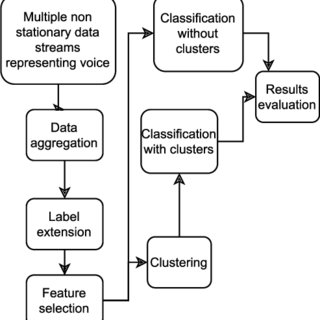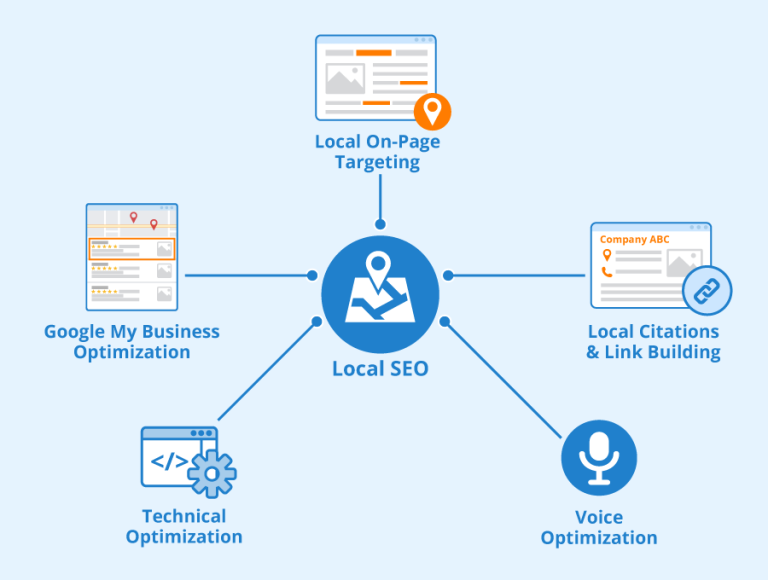What are topic clusters, and why are these important? [Free Template]
Have you been adding a lot of content to your website for an extended period of time and still struggling to attract a decent amount of traffic?
Pause for a bit of time and take a deep breath. All the work you have been doing might be in vain because you do not have a content strategy and are not working towards a goal.
Adding more content to your business website might not help you rank in Google. This is when the topic cluster becomes a role in improving business website visibility. So, today let’s talk about what topic clusters are and how to implement them in your content strategy.
A topic cluster is a group of related web pages that are linked to one pillar page. Arranging your web pages into a cluster helps Google to know your business boundary and understand the link between the contents.
Instead of focusing on one broad keyword, you’ll have a few related topics which will increase Google’s trust in your website.

Moreover, the topic cluster can support a content strategy to get a top position in the search engine result page (SERP) for specific keywords.
A topic cluster is a combination of three elements:
- Pillar page
- Cluster content
- Hyperlinks
What is the pillar page?
A pillar page is the epicentre of a cluster that serves as an authority page and is based on a broad topic related to the business.
It consists of 3000 to 5000 words, covering the overall aspect of the topic. In other words, the pillar page summarizes specific topics on the surface, including every subject matter related to the topic.
In fact, the pillar page contains content about the product or service offered by your business. While choosing a topic for your pillar page, ensure that you select a broad topic to cover every detail of your business or product.
Let’s say you’re a yoga teacher and want to rank for “Yoga for health.” So your pillar page should have in-depth information about the core topic answering all the possible questions the searcher might have.
Your pillar article might be “ Yoga for Health – An Ultimate Guide to remain healthy”. And you might want to cover most of the topics related to yoga and its effect on one’s health.
What is Cluster content?
Cluster content, or subtopic pages, is linked with pillar pages and deals with topics relevant to the pillar page.
This element focuses on specific long-tail keywords. Unlike the pillar page, it discusses in-depth the subtopic. Typically, cluster contents are in the form of a blog post which should completely answer the searchers’ query.
Continuing the same example, you can create cluster content on “yoga for back pain” to help the reader suffering back pain. While writing content on this topic, you should answer all readers’ questions.
What is a hyperlink?
Hyperlinks are essential in the topic cluster as it connects subtopic pages with the pillar page. By doing this, you’re telling the search engine that the pillar page is the authorized resource of the subtopic.
When linking internal links with every cluster content to the pillar page, you let Google know all content is related. This means you are signalling to Google that your website is trustworthy for the topic “Yoga for health.”

How can the topic cluster improve your search position?
Google is getting better at providing accurate search results; thus, publishing relevant content organised will give readers knowledge and improve visibility. Once you structure the topic cluster, you’ll get more traffic than before.
Here are a few ways the topic cluster can help improve your business website:
Quality content
As the topic cluster has a pillar page, cluster content, and hyperlink connecting the pages, thus you’re able to provide adequate information to the readers on the broad topic through subtopics.
This encourages readers to stay on your website for more information on broad topics.
Improve the authority of the website.
Obviously, when you provide valuable information on the broad topic through subtopics, you’re letting Google know that your website has quality information related to the topic. Therefore, topic clusters have a huge impact on improving your website authority.
Enhance visitor experience on the website.
If website visitors want to read more about the related topic, they don’t need to search in the search engine because they can click on the internal links to get more information. A topic cluster can be the factor that can build trust in your visitors.
Impact ranking
Creating internal links motivates people to move from one article to another with the intention of gaining deep knowledge, which is why they stay longer on your website. This notifies Google that people find your website valuable, thus improving your ranking.
How to create a topic cluster?
Consider the following steps below to improve the structure of the topic cluster:
- Identify the core topic
- Figure out subtopic
- Map the existing topic
- Link the web pages
- Improve the content
Identify the core topic
The first step is to create a pillar page. While creating content for this page, you should talk about the core topic of your business.
If your business offers service or sells products, describe your business offering completely. Try providing value to your readers by discussing benefits or solutions related to the core topic.
Figure out subtopic
When you have a core topic for your website, you need to specify the subtopics. Your subtopic should be a complete solution for that specific topic. You can identify the subtopic by scanning your audience’s questions related to the core topic.
Map the existing topic.
Mapping your existing topic can reduce your load of creating subtopic pages. If you have existing content that can link to your pillar page will maximize the number of content on the topic cluster.
It might take time to list the relevant content to the core topic, but this will reduce the stress of creating the content.
Link the web pages.
As mentioned above, creating a link adds value to your pillar page and helps build authority. When building links, go through each subtopic page and add links from each subtopic page to the pillar page.
Furthermore, you can create links from one subtopic to another, as this can also improve posting in Google.
Improve the content
After implementing all the steps, you must continuously evaluate and improve your content to earn search authority. You can conduct keywords and topic evaluations to analyze the performance and make necessary changes accordingly.
Conduct Keyword research
You must consider keywords when creating a pillar page or a subtopic page. Keywords are the factor your content will rank in the search engine result page.
You can research keywords using tools such as SEMrush, Ahrefs, and BuzzSumo. You may also use Quora to know which subtopics (related to core topics) people have been engaging in recently. You can use the KGR method to find easy keywords if your website is in the initial stage.

Other than these, you can get a keyword suggestion that Google suggests. Google suggests a section on Google that provides search recommendations when you search queries in the search box.
You may also look for LSI (Latent semantic indexing) keywords which you can find at the bottom of SERP.
What is the purpose of creating a topic cluster?
A website that has disorganized content will create difficulties for the search engine to crawl through your website and display your content on SERP.
Moreover, readers may also find a problem while browsing for related topics. If you don’t have a cluster topic, your content might go missing, as Google won’t find it.
The reader can get complete information regarding the searched topic using topic clusters. If your content can solve or answer all the questions of the searchers, then there is a high probability that readers will develop trust in your website.
This indicates that readers stick to your website for information regarding the product or service offered by your business.
Additionally, the more you educate your readers regarding your product or service, you increase the traffic and lead to your website.
Also, when one of your content in the topic clusters performs well, other content also performs better in ranking. This means you don’t just get traffic from one content; you get from other content too.
Final Thoughts
Implementing topic clusters on your website is indeed intimidating when the website already has a bunch of content. However, you can successfully execute this if you spend time identifying the content that can be linked to the pillar page.
Your effort to improve your rank will pay off only if you can implement the topic cluster on your website in a structured manner.
Also, effective keyword research and relevant content can improve your position in Google.
Download your free copy of the Topic Clusters Template.







